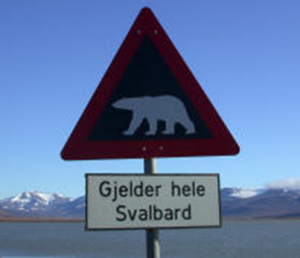News
Latest Lion Aid News
Lion and Polar bear attacks - there are similarities
Monday 8th August 2011
|
In a tragic event, a 17-year old British boy participating in a school expedition was attacked and killed by a polar bear entering his camping tent in Svalbard, Norway. Four other members of the expedition were wounded, some critically. It is reported an expedition leader, one of the four wounded, battled the bear before collecting his rifle to kill the bear. This is what just one internet site says about Svalbard: “Svalbard is an archipelago in the Arctic Ocean north of mainland Europe, about midway between Norway and the North Pole. Svalbard is the northernmost tip of Europe and its settlements are the northernmost permanently inhabited spots on the planet. The biggest threat on Svalbard is polar bears (isbjørn). Five people have been killed by polar bears since 1973, and if travelling outside settlements you are required to carry a rifle at all times to protect yourself. The polar bear is a common sight, now, in Svalbard, and the population numbers around 3000 individuals” according to http://www.tunliweb.no/SM/alb_svalbard.htm. Polar bears have come onland in increasing numbers as the polar ice melts in summer, as now. That means they are also increasingly hungry, as they do not have the usual access to their main prey – seals. I believe several preventable mistakes seem to have been made after reading initial reports that could have averted the death of the boy. First, the Norwegian Government should have ensured the expedition members had adequate protection from these dangerous predators, and/or questioned the decision to allow kids to be staying in flimsy tents on Svalbard. Second, the expedition leaders should not have been surprised that polar bears roam Svalbard in great numbers. One would have not only expected them to be armed, as they were, but to perhaps to better ensure that sentries were vigilant. Polar bears are generally active during the day – meaning pretty much 24 hours in Svalbard right now. Third, it should have been known to the expedition that polar bears actively hunt humans, and actually have been documented to go out of their way to do so. There were victims and heroes in this polar bear attack, and the polar bear is dead. With foresight, better planning, and better protection much of this could have been prevented. There has also been a recent publication by Craig Packer and his co-authors on lion attacks and eating of humans in Tanzania. The exact numbers are not really known for a number of factors, as the person could have been killed due to a retaliatory attack on a stock-raiding lion, murdered and then attributed to a lion attack, etc. Nevertheless, Packer believes that between 1998 and 2009, some 1000 people were attacked and 2/3 of them killed.
Let me explain. At full moon, the moon comes up as the sun sets and then stays around, lighting the night. Leading up to the full moon, the moon rises earlier than the sun. After the full moon, there is each day a growing period of darkness, culminating in the new moon. Lions like to hunt at night, not because they can see, hear, or smell better than their prey, but because they are ambush predators that rely on stealth. Lions, to their animal prey, stand out like sore thumbs during a waxing moon. Full moon is the lions’ worst nightmare. Light all day, light all night… but then comes the period of the waning moon. Lions are now getting hungry. Just like a polar bear on Svalbard that has not hunted seals for a while. Humans blundering around, who should know better, then become fair game. Large predators are dangerous, and as we should also perhaps realize, predictable to some extent. Tags: lions, Tanzania, humanwildlife conflict, polar bears, Norway, Categories: Human/Wildlife Conflict |
Add a comment | Posted by Pieter Kat at 13:31




